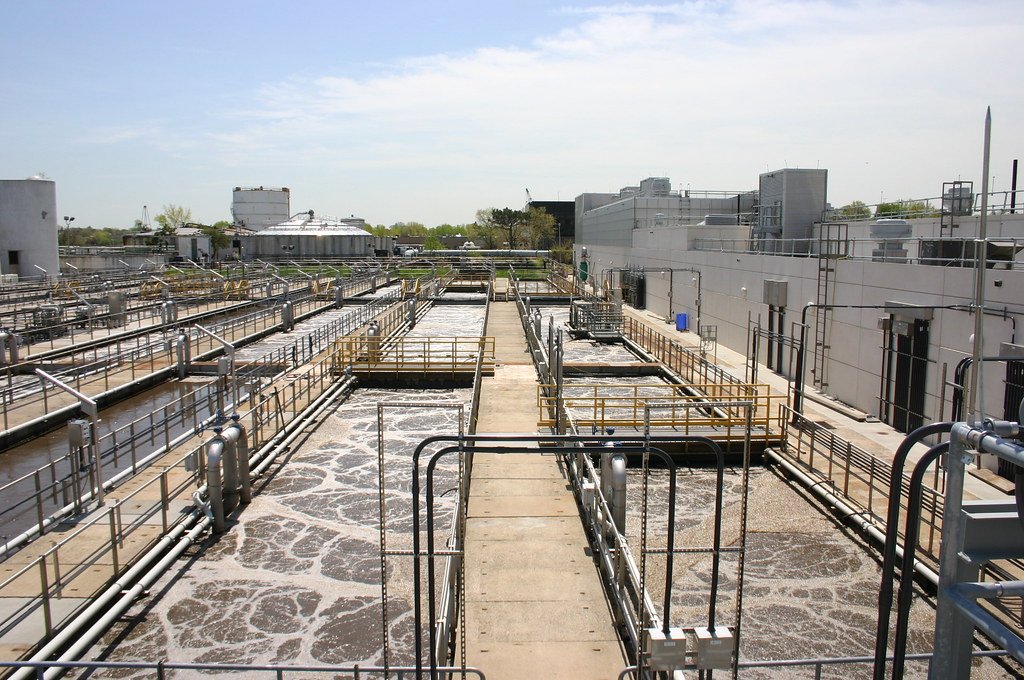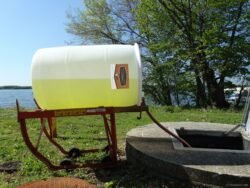
Tallman Island Wastewater Treatment Plant

The Tallman Island Wastewater Treatment Plant: A Vital Component of New York City’s Water Management System
By [Author’s Name]
Introduction
Tucked away in the College Point neighborhood of Queens, New York City, Tallman Island Wastewater Treatment Plant functions as an indispensable component of the city’s extensive wastewater management system. Situated on a 16-acre site, it treats wastewater from approximately 310,000 residents spread across various communities including parts of northern Queens and sections of the Bronx. With the growing concerns around environmental sustainability and public health, understanding the importance, operation, and challenges associated with Tallman Island Wastewater Treatment Plant is more imperative now than ever before. This article provides an in-depth overview of the plant’s history, operational intricacies, technological advances, and future outlook.
Historical Background
The Genesis
The necessity for an organized and efficient wastewater treatment system in New York City became increasingly apparent by the early 20th century. Raw sewage discharge into local water bodies was causing rampant pollution, public health crises, and an unpleasant atmosphere in the city. In response, municipal authorities began exploring comprehensive solutions for wastewater management.
Tallman Island Wastewater Treatment Plant was conceived as part of this ambitious initiative. Constructed in the late 1930s and becoming operational in 1939, the plant was initially capable of processing a much smaller volume of wastewater compared to its current capacity. However, it set the groundwork for the city’s evolution into a more modern, sanitary urban environment.
Development Over the Decades
Over the decades, the plant has undergone numerous upgrades and expansions to keep pace with the increasing urban population and modern technological advancements. The 1960s and 1970s witnessed significant infrastructural enhancements, including the installation of additional treatment tanks and the introduction of secondary treatment processes. More recently, efforts have concentrated on integrating cutting-edge technologies aimed at improving energy efficiency and reducing environmental footprints.
Wastewater Treatment Process
Overview
The wastewater treatment procedure at Tallman Island follows a multi-stage process designed to remove contaminants, organic material, and harmful microorganisms before discharging the treated water into the receiving water bodies. The treatment process can broadly be divided into primary, secondary, and tertiary stages, accompanied by the handling and disposal of the resultant solid by-products.
Preliminary Treatment
As wastewater enters the facility, it passes through screens that remove large debris such as rags, sticks, and other waste materials. This is followed by a grit removal stage wherein heavier particles like sand and gravel settle at the bottom through controlled velocities in grit chambers. This phase is crucial for protecting downstream treatment units from blockages and excessive wear and tear.
Primary Treatment
The primary treatment stage involves primary clarifiers where wastewater is held in large settling tanks. Here, heavier solids settle to the bottom as sludge, while lighter materials such as grease and oil rise to the surface and are skimmed off. On average, this stage can remove approximately 50% of the suspended solids and up to 30% of the Biological Oxygen Demand (BOD) from the wastewater.
Secondary Treatment
The heart of the wastewater treatment process, secondary treatment, revolves around biological treatment methods. At Tallman Island, the activated sludge process is employed, leveraging aerobic microorganisms to consume organic pollutants in aeration tanks. The water is then transferred to secondary clarifiers where the microbial biomass, or sludge, settles and is separated from the treated water. The efficacy of secondary treatment can achieve over 85% removal of BOD and suspended solids.
Tertiary Treatment and Disinfection
Depending on regulatory requirements and existing environmental conditions, wastewater may undergo additional tertiary treatment. This stage involves advanced filtration techniques to remove any remaining contaminants. At Tallman Island, disinfection is achieved primarily through chlorination and dechlorination processes, ensuring the treated effluent is safe for discharge. In recent years, there have been movements towards adopting UV disinfection technologies as a more environmentally friendly alternative.
Sludge Treatment and Disposal
Sludge Digesters
The by-product of both primary and secondary treatment processes is sludge, a semi-solid mass laden with organic material and microorganisms. At Tallman Island, sludge undergoes stabilization in anaerobic digesters. These digesters facilitate the decomposition of organic material under oxygen-free conditions, generating biogas—a mixture of methane and carbon dioxide—which can be harnessed for energy generation.
Dewatering and Disposal
Following anaerobic digestion, the stabilised sludge is subjected to dewatering processes, typically employing centrifuges or belt filter presses. The end product, often referred to as “cake,” contains significantly reduced moisture content and can be efficiently transported for final disposal. Depending on regional regulations and sustainability goals, this dewatered sludge may be disposed of in landfills, used as agricultural fertilizer, or further processed for other beneficial uses.
Environmental and Public Health Significance
Mitigating Pollution
The most perceptible impact of the Tallman Island Wastewater Treatment Plant is its substantial role in mitigating water pollution. By treating millions of gallons of wastewater daily, the plant ensures that harmful pathogens, chemicals, and untreated sewage do not enter the surrounding water bodies. This results in improved water quality, fostering a healthier ecosystem for aquatic life and making water bodies safer for recreational activities.
Enhancing Public Health
Untreated wastewater is a breeding ground for disease-causing bacteria and viruses, posing severe public health risks. By systematically removing these contaminants, Tallman Island reduces the incidence of waterborne diseases and contributes to the overall health and well-being of the population. Moreover, effective wastewater treatment prevents foul odors and improves the quality of life in surrounding communities.
Technological Advancements
Automation and Control Systems
Embracing modern technology, Tallman Island has integrated advanced automation and control systems to monitor and manage the treatment processes efficiently. Real-time data acquisition and analysis enable plant operators to swiftly respond to varying influent characteristics and operational anomalies, thereby optimizing treatment performance and reducing operational costs.
Energy Efficiency Initiatives
With energy consumption constituting a significant portion of operational expenses, Tallman Island has pioneered several energy efficiency initiatives. These include the utilization of biogas produced during anaerobic digestion to power facility operations, and the installation of energy-efficient equipment such as variable frequency drives and energy recovery systems.
Green Infrastructure
In alignment with New York City’s broader sustainability goals, the plant has incorporated green infrastructure solutions, such as green roofs and permeable pavements. These innovations not only enhance the facility’s aesthetic qualities but also contribute to stormwater management, reducing the burden on the treatment infrastructure during heavy rainfalls.
Challenges and Future Outlook
Aging Infrastructure
One of the foremost challenges faced by Tallman Island is its aging infrastructure. Many components of the plant, constructed several decades ago, are now reaching the end of their operational lifespans. This necessitates significant capital investments in rehabilitation and replacement projects to ensure uninterrupted and efficient treatment operations.
Climate Change Impacts
Climate change poses multifaceted challenges to wastewater treatment facilities. Increased frequency and intensity of extreme weather events, such as hurricanes and heavy rainfall, can overwhelm the plant’s capacity, leading to combined sewer overflows (CSOs). Rising sea levels also threaten the structural integrity of the facility. As such, Tallman Island is proactively engaged in climate resilience planning and the implementation of adaptive measures to safeguard against these impacts.
Legislative and Regulatory Compliance
Adhering to stringent environmental regulations is an ongoing challenge for wastewater treatment plants. Emerging contaminants, such as pharmaceuticals and microplastics, are garnering significant regulatory attention, necessitating the adoption of advanced treatment technologies. Tallman Island remains at the forefront, continuously upgrading its processes to meet and exceed regulatory standards.
Community Involvement and Public Awareness
Fostering community involvement and raising public awareness about wastewater treatment processes is critical for the plant’s success. Educational initiatives, facility tours, and public outreach programs are instrumental in garnering community support and promoting responsible waste disposal practices.
Conclusion
The Tallman Island Wastewater Treatment Plant stands as a testament to the critical importance of effective wastewater management in urban settings. Through its comprehensive, multi-stage treatment processes, the plant not only safeguards public health and mitigates environmental pollution but also exemplifies technological innovation and sustainability.
As we navigate the complexities of urbanization and climate change, the continued evolution and enhancement of facilities like Tallman Island are paramount. Through strategic investments in infrastructure, embracing cutting-edge technologies, and fostering a collaborative relationship with the community, Tallman Island is well-positioned to meet future challenges and contribute to a cleaner, healthier, and more resilient New York City.
[Author’s Name] is an expert in urban environmental management specializing in water and wastewater treatment systems. Through his extensive research and field experience, he aims to shed light on the critical role of sustainable infrastructure in augmenting urban resilience and environmental stewardship.
